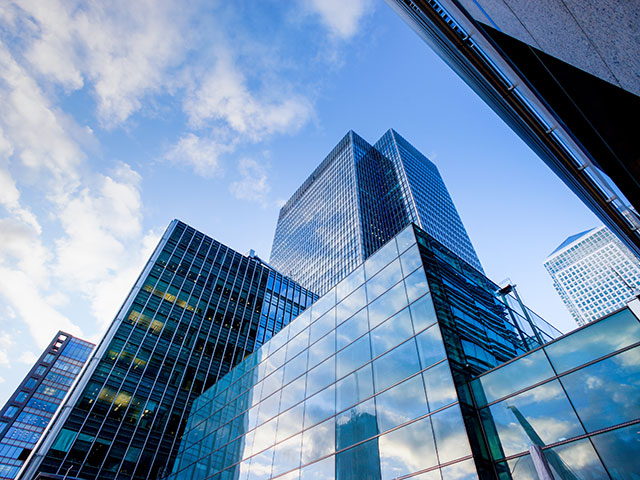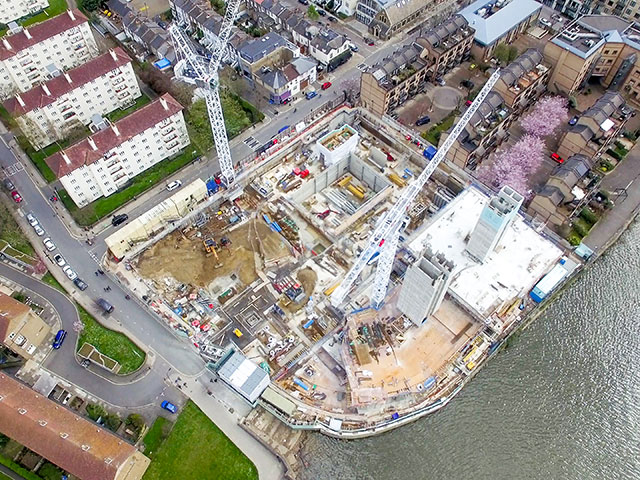
What is the state of the UK’s progress on decarbonisation in buildings?
We have a better understanding of requirements and certainly a greater ability to deliver than two decades ago. It’s a question of willpower. As things are changing rapidly, organisations tend to look at offsetting but this should be an interim measure whilst they start embedding the next generation of carbon-neutral designs and technologies into portfolios.
Granted, we’re seeing coalitions like Transform to Net Zero, a group of 9 organisations including Microsoft, who are going a stage further to become carbon negative by 2030. This is also something that Tetra Tech has outlined to achieve in the next decade. If those companies seek to become tenants at properties helping them achieve that goal, this could be a big driver pivoting the focus away from offsetting to returning all the carbon they’ve ever used.
Has the approach to Modern Methods of Construction (MMC) as a driver for decarbonisation changed?
The basic engineering hasn’t changed; the same laws of physics govern development of high-performance buildings. The real issue in a construction environment with successful MMC is and has always been bringing the land and developments through at the same pace as the factory output. It is difficult to match the availability of land with the uncertainties of planning, in ground risks and utilities with a construction manufacturing unit producing units on the hour every hour. I’ve always been an advocate of ‘componentisation’ as a way around that.
What is componentisation?
Componentisation is about producing much more standardised components that are very similar to one another and can therefore be rolled out more efficiently across buildings of various uses.
Across many projects, lots of spaces in buildings share commonalities in floor-to-ceiling height, structural frames, brick stone cladding, front fenestration panels, walls, floors, furniture, fittings, or windows, etc. You can see this in accommodations across social housing, extended care, and teaching blocks. Through this approach, a wash hand basin doesn’t change in a bathroom just because it’s in a police station as opposed to armed forces accommodation. There’s an enormous opportunity to better exploit these similarities.
Componentisation breaks down elements and creates more standardised and flexible design solutions. This, however, applies more easily to new builds than refurbishments, which face a much bigger problem. This is something we are beginning to examine with main contractors, their tier 1 supply chain and as they move into MMC. We need to work out holistic solutions from the earliest design to operation.
What is the problem with existing buildings?
Although it may sound obvious, designing a low-carbon solution for a refurbishment is far more difficult when retrofitting an existing building lacking the commonality found between specifications for new builds.
Since roughly 75-90% of today’s buildings in Europe are expected to be in use by 2050, the real carbon problem lies in adapting existing buildings and minimising impact. The Department for Education’s new procurement path involves hundreds of high-performance buildings but within its current portfolio are roughly 20,000+ existing school buildings all built prior to low carbon and energy efficiency regulations which need to be looked at
For example, If you’re trying to achieve natural ventilation in a building not designed for it, and it’s overheating because it’s a 1960s-era ribbon development of fairly thin concrete and massive wrap-around windows, that will be more costly and complex to retro-engineer to make it a green building.
Why not replace existing buildings wholesale? What’s the advantage to reusing buildings?
Regeneration has many benefits not just related to cost that shouldn’t be ignored. In sustainability terms, it makes more sense to reuse a building because you’re saving a lot of embodied carbon already there from day one – far more carbon efficient than using new materials.
What do you think is the biggest emerging opportunity for decarbonising existing buildings?
From a carbon engineering view, the big opportunity will be the high street. After the struggles retail shops have faced during the pandemic, it’s no longer about making high streets a place where people have to shop, but rather, designing a high street people want to visit for recreation and enjoyment. Recent changes to the UK’s planning system that make it easier to convert retail uses to residential may further spice things up. The question is, how do you re-engineer spaces meant for retail into other uses sustainably and energy-efficiently?
Do high performance buildings make financial sense to invest into?
They have for a long time, especially buildings that need to exist well into the longer term.
A university’s campus may exist for decades and in the same ownership, in which case reducing energy consumption with a potential ten-year payback makes sense. But if you are buying and selling property, or building to sell there’s little incentive to embed sustainability measures with a longer payback until the purchaser, tenant, or market demands a low-energy, highly sustainable building. So it is back to Microsoft as tenants and in the case of residential development a wider acceptance and market perception which will drive an uptake of sustainability especially in existing building stock portfolios.
How will high performance buildings ultimately succeed?
If you consider how much of our infrastructure came about pre-mobile phones and how much apps have impacted our lives, you start to realise the gap between the old and new ways of designing buildings. The solution lies in bringing the app culture into the building use space. That is where high-performance and smart buildings are going, and it’s an area of development we have looked at for a while now. You can imagine the benefits of booking your electric vehicle charging or controlling the building and its usage via an app interface to achieve minimum carbon usage.
In the end, high performance buildings will succeed because alongside reduced travel and the banning of car and diesel engines they’re an important part of a strategy to cut emissions.

